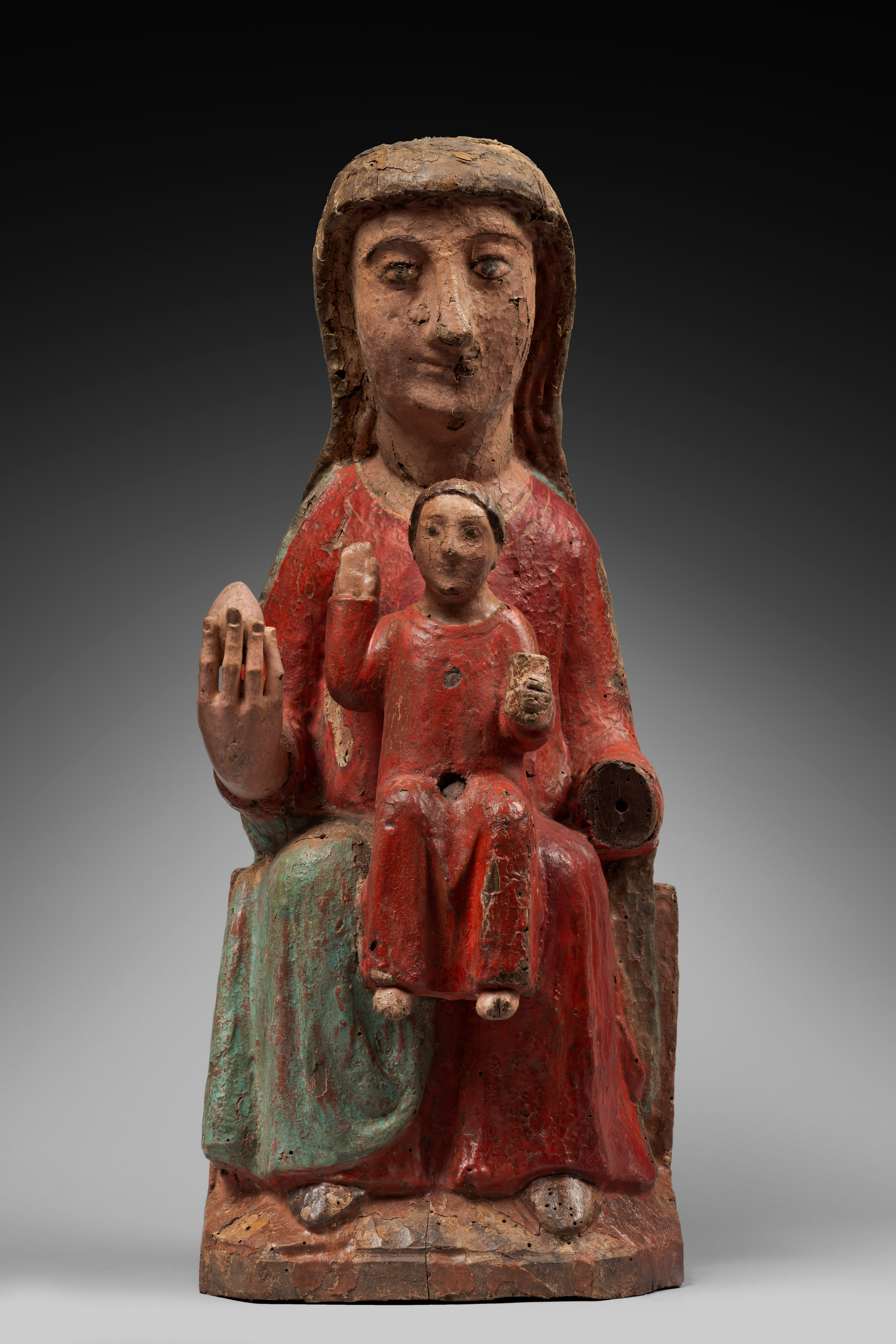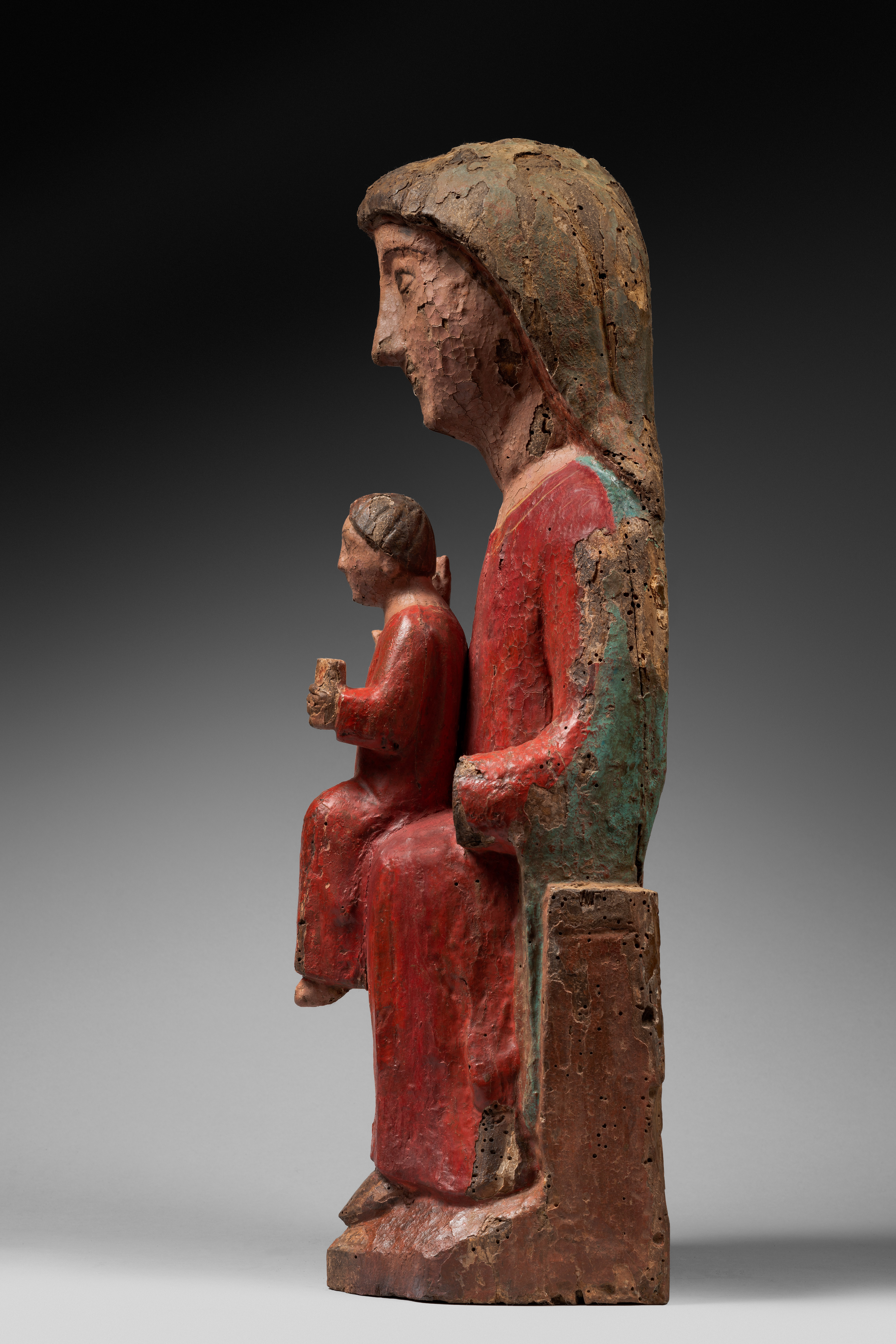Description
In the middle of the 12th century, the Virgin Mary took her place in churches, sitting in majesty, serving as a throne for her son Jesus.
She is then said to be “Sedes Sapientiae” meaning a “throne of wisdom”.
She is not represented for herself but is only existant as she was designated as the Theotokos, the mother of God at the Concil of Ephesus in 431, where the divine nature of Christ was proclaimed from his birth.
The Virgin and Child in Majesty was a particularly important iconographic theme during the medieval period. The pilgrimages encouraged their development while spreading the models.
This Virgin and Child with narrow, sloping shoulders is seated on a throne bench. She is wearing a red dress with a rounded neckline and a blue cloak with one side covering her knees. These soft clothes have an elongated line.
The Virgin has an oval face, a straight nose, a plain mouth and a small rounded chin. She wears a veil that covers her hair.
She raises her right hand and holds up a fruit with her slender fingertips.
The Child adopts the hieratic position of the 12th century groups, placed right in the center. He is dressed in a long red tunic that shows his small feet. A wide M-shaped pleat folds the tunic, typical of Castilian productions from the end of the 13th century and the beginning of the 14th century.
He has a slim face, his lips give him a joyful and amused look. He holds a book in his left hand and raises his right hand in blessing.
All the characteristics allow us to situate this Virgin and Child as being from Castile at the end of the 13th century.
Still very hieratic, with the child placed well in the center, we can nevertheless begin to see a new movement suggested by the position of the hands. Moreover, the smiles on the two faces confirm that this group was created at the end of the 13th century.
This Virgin and Child, thus appear to be a very fine example of Iberian art and has come down to us in a good state of preservation.
Bibliography
Fons del Museu Frederic Marès /1, Catàleg d’escultura i pintura medievals, Ajuntament de Barcelona, 1991


